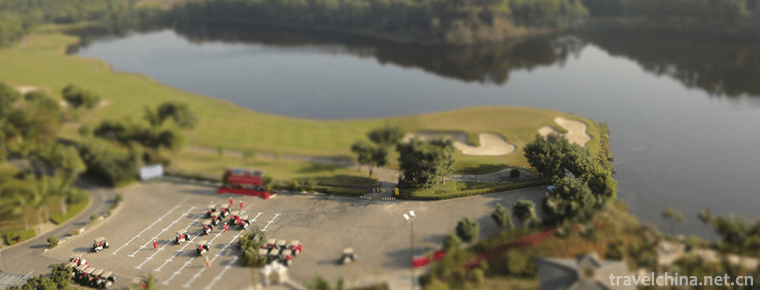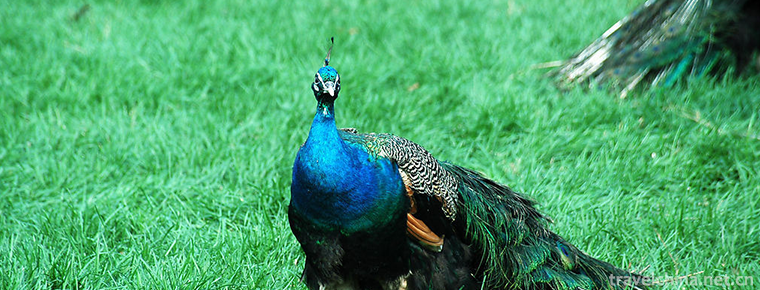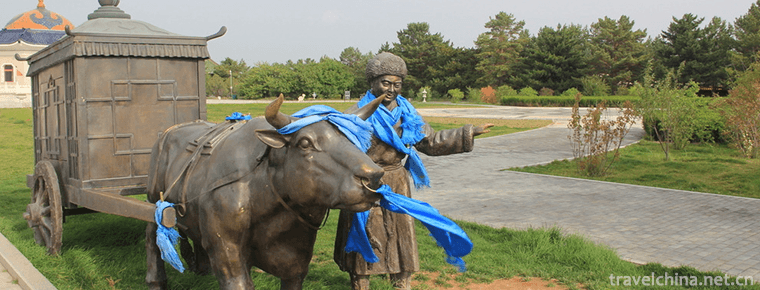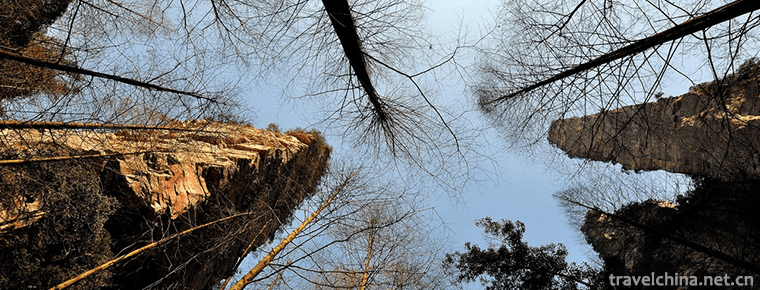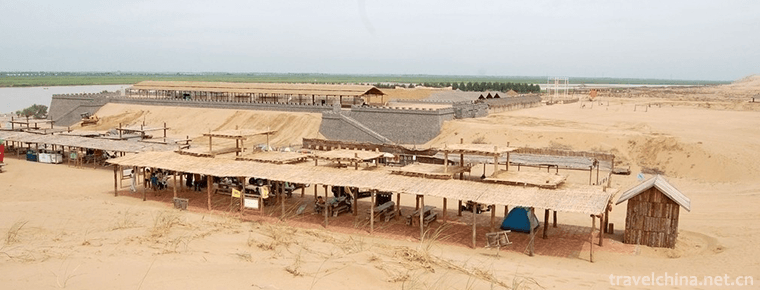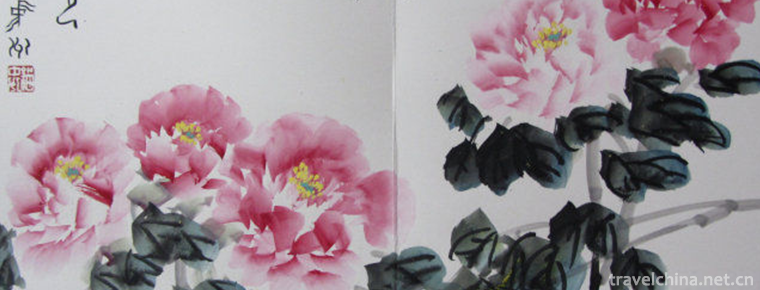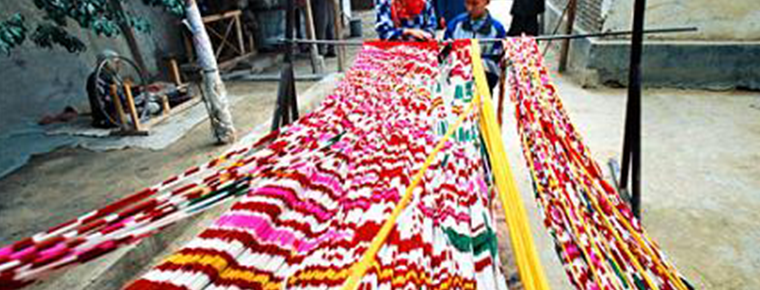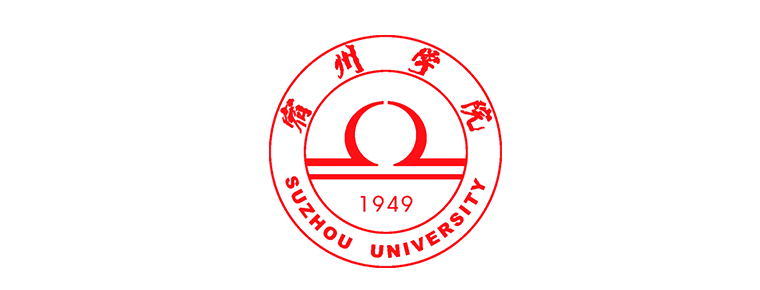Salar Costume
Salar Costume
The traditional dresses of the Salar nationality are bright and bright in color and full of national characteristics. Salar costumes have two characteristics, namely (1) Islamic color of costumes; (2) interaction and harmony with Hui, Tibetan and Han costumes. However, the dresses of the Salar people are generally the same as those of the Hui people. The difference is that their jackets are generally broad and their waists are tied with cloth.
On June 14, 2008, Salar costumes were approved by the State Council to be included in the second batch of national intangible cultural heritage lists.
Costume Style
Salar men usually wear white shirts, black shoulders, belts, trousers, Lotties or cloth shoes, and black or white dome caps. The belts are mostly red and green, while the trousers are mostly black and blue. In winter, men wear sheepskin jackets or woolen brown sweaters, while the wealthy hang cloth or wool outside. Women's jackets, black or purple shoulders, pants, embroidered shoes. Like to wear gold, silver rings, jade, copper or silver bracelets, silver earrings and other jewelry. Young women wear green caps, middle-aged women wear black, and older women wear white.
According to the differences of times and environment, different economic lifestyles and even different climatic characteristics, Salar people create unique national costumes. The earliest clothes were worn in the style of the nomadic people in Central Asia. Men generally wore curly-rimmed lamb caps, half-waist boots, wooden clips (similar to the Uygur "dragonfly"), and red shuttle cloth at the waist.
Women wear the same clothes as men, but only red and blue silk scarves. Later, men usually wear broad jackets or long shirts, trousers, waistbands, wealthy people wear silk ribbons, black or white six-toothed caps, and flat-soled cloth shoes. Older people often wear long gowns and wore "Darsdale" (turban) around their heads at church.
Young men like to wear white pairs of jackets, red cloth belts or embroidered belts around the waist, a suitable black short shoulder jacket, black and white contrast is clear, clean and elegant. When getting married, the waistband is sewn with red and blue satin and embroidered with various flower patterns, Embroidered Ribbon "embroidered girth", and the feet are wearing embroidered socks and cloth slippers.
Middle-aged women's clothes are longer, trousers feet touch the ground generally, feet wear embroidered pointed "Gugu shoes". Young women like to wear bright-coloured large-skinned clothes. Black and green jackets with long or short shoulders are slim and handsome. They like to wear gold and silver earrings, rings and bracelets.
At the end of Ming Dynasty and the beginning of Qing Dynasty, when women went out to work, they wrapped their heads in blue cloth and wore spacious embroidered lace capes on festivals. Later, he changed to wear a "hood" and put it on the back like a windbag. "Cover" is exquisite, the color varies with age. Generally, girls and newly married women are green, which symbolizes vigor and prosperity; middle-aged or married children wear black, which symbolizes maturity, sophistication and dignity; older people are mostly white, which symbolizes white, flawless and natural simplicity.
Regional characteristics
Yunnan and Guizhou. Sala people mainly live in Xunhua, Hualong County of Qinghai Province and Dahejia area of Jishishan Mountain of Gansu Province. Their habitat is relatively concentrated, so their clothes are relatively uniform. In terms of color, men mainly use white and black to avoid red, yellow and colorful clothes; in addition to attending religious ceremonies, women wear colorful clothes and pants, and then wear black or purple shoulders, which are charming and charming. Sala's dress is basically the same as Hui's. The difference is that the jacket is generally broad and the waist is tied with cloth. Salar men like to grow beards, wear hexagonal black or white round caps, young people wear white pair-skinned jacket, black shoulder jacket, black hat, blue trousers. Women wear caps, colorful large-skinned clothes, black shoulders, earrings, bracelets, rings and other gold and silver jewelry. The girl wears a hood after marriage.
historical origin
The Salar people, who believe in Islam, are named for their self-proclaimed "Salar" or "Sala" for short. Some people believe that the Sala people are descendants of the ancient Sarul of the Ugus tribe of the Western Turks. They lived in China in the Tang Dynasty and moved westward to Central Asia. The Yuan Dynasty took Samarkand and returned to China eastward. Up to now, it has been settled in Xunhua area of Qinghai for about 700 years. In the course of long-term historical evolution in the future, due to the natural conditions of the Qinghai-Tibet Plateau, the social and economic conditions of the ethnic group and the interaction with the surrounding brothers, as well as the influence of Islam and other factors, gradually formed their own unique national habits and customs.
Current Situation of Folklore
In the past, men wore embroidered bellies; women wore right jackets, jackets, shoulders, trousers, caps, bright colors, and some used silk as fabrics. In addition, women paid attention to piercing blue patterns between the forehead and the back of their hands. Men and women's jackets are longer than shoulders, wearing to the edge of the outerwear is beautiful. In addition, in the past, Salars wore leather jackets in winter and long shirts in summer, with long and wide sleeves, making it easier to bargain in sleeves. With the development of economic life, the dress of Salars gradually changed to uniform or suit. Even if someone wears a traditional leather jacket, the sleeves are not too wide. So today, many Salars have changed their prices under sheepskin jackets. Those who specialize in the sale of sheepskin cover the sheepskin on their hands, that is, trade.
In the past, the Salar working people mostly wore cloth-free sheepskin jackets or wool-woven "browns" and cloth shoes or cowhide crepe "Loti". Nowadays, with the improvement of people's lives and the prosperity of the market, more changes have taken place in men's and women's clothes. Women wear colorful chemical fibers, silks and satins and wool fashions, with a good quality of Qiaoqi veil cap on their heads, while men wear woolen Zhongshan suits and suits, and new leather shoes on their feet.
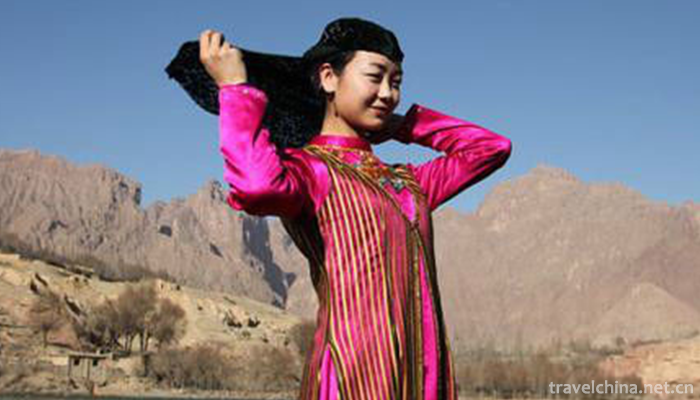
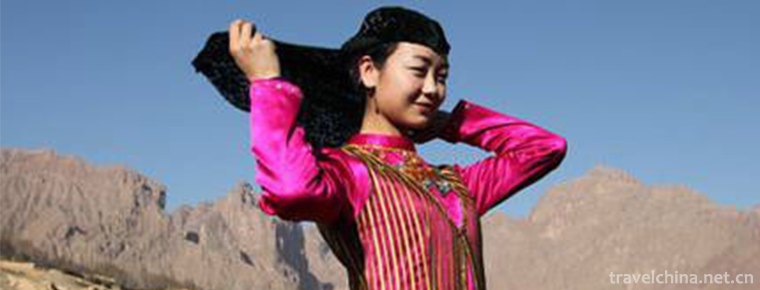
Salar Costume
-
Guanlan Lake Leisure Tourist Area
Shenzhen Guanlanhu Leisure Tourist Area, in May 2011, was awarded the National 5A Tourist Scenic Area, located in Shenzhen, Guangdong Province.
Views: 191 Time 2018-12-12 -
Yangma Island Scenic Area
National AAAA-level tourist attractions, Shandong Province "Top Ten Tourist Scenic Spots", 2008 "Tourists'Favorite Charm Scenic Spots". Located 9 kilometers north of Ninghai Town,
Views: 162 Time 2018-12-26 -
dalian forest zoo
Dalian Forest Zoo is located in Baiyun Mountain Scenic Area, Dalian, covering an area of 7.2 square kilometers. The zoo is divided into two parts: the first phase of captivity and the second phase of
Views: 176 Time 2019-01-06 -
Ordos Cultural Tourism Village
Ordos Cultural Tourism Village is located in the front banner of Etok, Ordos City. It is located in the western Ordos grassland at the junction of Mengning and Ningxia. It is located in the beautiful
Views: 427 Time 2019-01-08 -
Harbin Jinyuan Cultural Tourist Area
Harbin Acheng Jinyuan Cultural Tourist Area, the capital of Jin Dynasty from 1115 to 1234, is the only well-preserved capital site of Jin Dynasty. Up to now, the Royal City's Wumen Gate and palace bui
Views: 542 Time 2019-01-13 -
Huang Sha ancient ferry
The original eco-tourism scenic spot of Huangsha Gudu is one of the eight scenic spots of Ningxia in Ming and Qing Dynasties, including the national AAAA-level tourism scenic spot, the National Wetlan
Views: 172 Time 2019-01-18 -
Luoyang Peony Festival
The Chinese Luoyang Peony Culture Festival, formerly known as the Luoyang Peony Flower Festival, has been selected into the national intangible cultural heritage list since 1983. In November 2010, it
Views: 125 Time 2019-05-15 -
Weaving and Dyeing Techniques of Adlais Silk
Adlais silk is produced in Jiya Township, Luopu County, located in the northwest of Luopu County, on the East Bank of the middle and lower reaches of the Yulong Kashi River. Ancient Hetian was the tra
Views: 450 Time 2019-07-06 -
Suzhou University
Suzhou University is a full-time undergraduate college in Anhui province. It is an applied undergraduate university in Anhui province. Anhui higher education revitalization program "Local applica
Views: 199 Time 2019-11-21 -
Zigong Salt History Museum
Zigong Salt History Museum is located in the center of Zigong, Sichuan Province. It was built in 1959. It is one of the earliest professional museums in the history of Chinese museum development. It is still the only Museum of salt history in China. On May 18, 2017, it was promoted to the third batch of national first-class museums.
Views: 181 Time 2020-10-15 -
Guiyuanlin Zhangba Luzhou
Longan forest in Zhangba, Luzhou is a genetic Bank of Longan Germplasm in inland China. As the most concentrated longan plantation with a history of more than 100 years, it is as valuable as giant panda in zoology.
Views: 196 Time 2020-10-16 -
Xiling Snow Mountain
Xiling Snow Mountain, located in Dayi County, Chengdu City, Sichuan Province, is only 95 kilometers away from Chengdu, with a total area of 483 square kilometers. It is a world natural heritage, giant panda habitat, AAAA tourist attraction and national key scenic spot.
Views: 338 Time 2020-11-06
